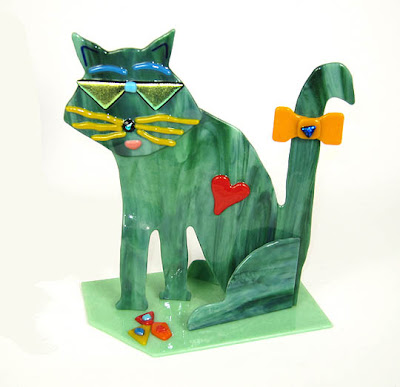 |
| The Dream Maker by Andrea Peterson |
What stimulates the artistic mind to pick up a brush and create a painting, or to produce a beautiful object, or, for that matter, to write a compelling novel? Sometimes we see something that triggers our imagination – whether it’s a beautiful landscape, a bowl of perfect fruit, colors that turn us on, or a story that we’ve overheard.
Some artists use many of these stimuli to create their work. Painters can tell the story of what they’ve been thinking about through narrative art. These storytellers don’t use words; they use images and color to inform the viewer.
Ka Fisher’s paintings, which have a lovely, Impressionist style, tell stories about Native Americans – their land and the things they do during their daily lives. She told me that she often visits places like Chinle, Kayenta and Canyon de Chelly for her inspiration. At the Hubbell Trading post, she has taken a “listening tour,” where she overhears conversations among customers.
 |
| Escape Plan by Ka Fisher |
 |
| Billy Blue Hat Rides by Ka Fisher |
“I get many ideas from the people I meet and the stories I hear,” Ka said. For example, I heard about animals that tend to get away such as problem sheep. That provided me with the idea for ‘Escape Plan,’ which depicts a woman herder and a border collie keeping watch over sheep that seem to have another idea about where they want to go.”
 |
Boots and Fetish
by Ka Fisher |
Another painting, “Come to Say Hello,” was inspired by a moment when Ka was at a ranch in Taos eating donuts and some horses approached her. “I think they wanted a taste,” she said. “That was a moment I remembered and decided to share in this painting.” Although her references are accurate, Ka’s color palette is very imaginative, as you can see in her paintings.
 |
| Come to Say Hello by Ka Fisher |
Sometimes memories can play a role in narrative painting. In Ka Fisher’s case, she spent her childhood summers in Canada by a river near two Indian villages. The scenes she paints incorporate some of that landscape, along with the Southwest she has adopted as her current home.
Andrea Peterson’s paintings are based on ancient mythology, lost legends and a time when nature was full of mystery. She, too, tells stories about cultures, often referring to eastern traditions and symbolism. Andrea’s paintings seem to be inspired by thoughts of figures wandering through mystical lands.
 |
| Phoenix and the Tiger by Andrea Peterson |
 |
| Field of Piece by Andrea Peterson |
For example, in “Phoenix and the Tiger,” she uses popular yin/yang symbols. The white tiger is a rare animal, and a powerful representation of strength, or yang. The girl has the tattoo of the Phoenix bird, a feminine, or yin, symbol of rebirth. Although this painting is highly imaginative, Andrea told me that the background is actually a depiction of an actual Chinese landscape called "Tiger Leaping Gorge."
 |
| My Bonnie by Andrea Peterson |
In her painting entitled “Field of Piece,” we see a young woman with windblown hair cradling a lamb. The landscape that surrounds her is clearly one of the artist’s imaginations, and we wonder about the story that she is telling us here.
Her newest painting, entitled "Spirit World," is inspired by the annual
Chinese lantern festival where many lanterns are released the first full
moon of the New Year.
“
Spirit World celebrates positive relationships between people, ancestors, nature and the higher beings that were believed to be responsible for bringing or returning the light each year,” Andrea said. “The large size of this painting gives the viewer the sense of not just looking at a peaceful scene, but the feeling of being within the painting themselves,” she explained.
 |
| Spirit World by Andrea Peterson
|
As you can see, narrative art depicts subjects that are dear to an artist’s heart. In my
next blog post, I’m going to look at paintings by
Thom Ross. His stories are all about famous Western characters and the myths that follow them. Should be interesting!






































